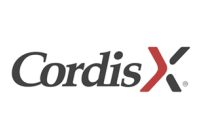- Serum EPA Levels Showed Approximately 400% Increase Following Administration of VASCEPA
- High EPA Levels Associated with Substantial Reductions in Multiple Cardiovascular Endpoints Including Heart Failure and Total Mortality
Amarin to Webcast Discussion of Presented Data March 30, 5:30 – 6:30 p.m., Eastern Time
DUBLIN, Ireland and BRIDGEWATER, N.J., March 30, 2020 (GLOBE NEWSWIRE) — Amarin Corporation plc (NASDAQ:AMRN), today announced that data presented by Deepak L. Bhatt, M.D., M.P.H., Executive Director of Interventional Cardiovascular Programs at Brigham and Women’s Hospital and Professor of Medicine at Harvard Medical School, at the American College of Cardiology’s 69th Annual Scientific Session Together With World Congress of Cardiology (ACC.20/WCC), demonstrated that on-treatment serum EPA levels from VASCEPA® (icosapent ethyl), administered at 4 g/day, strongly correlated with reductions in cardiovascular events in the REDUCE-IT® study.
As part of a prespecified analysis, serum EPA, DHA (docosahexaenoic acid,) and other biomarkers were measured at baseline and across several visits. Following administration of VASCEPA, a pure, stable, prescription EPA therapy, serum EPA levels showed an approximately 400% increase across the study from baseline (26.1 μg/mL) versus placebo, including to year 1 (144 μg/mL; p=1×10-30). DHA levels were measured and showed a decrease of 2.9% (p=0.002).
On-treatment EPA levels in the VASCEPA group were associated strongly with reduced cardiovascular events, including benefits observed in the primary and key secondary endpoints, each component of these endpoints such as cardiovascular death, as well as benefit in heart failure and total mortality with high on-treatment EPA levels.
These analyses also suggest that achieved EPA with 4g/day of VASCEPA is a marker for the majority of the relative risk reduction observed in REDUCE-IT. The EPA levels achieved in REDUCE-IT were well above levels that can be achieved with diet or with dietary supplements.
Biomarker analyses suggest substantially less contribution of changes in measured lipid, lipoprotein, and inflammatory biomarkers to the cardiovascular benefit observed in REDUCE-IT.
“Following the approval of icosapent ethyl as an adjunct to maximally tolerated statin therapy for a broad range of patients at risk for cardiovascular disease, a common question from physicians has been, what is the mechanism behind the large reductions in cardiovascular events such as heart attacks and strokes seen in REDUCE-IT?” commented Deepak L. Bhatt, M.D., M.P.H., lead investigator of the REDUCE-IT trial. “Now we see that the benefits appear to be driven primarily by on-treatment EPA levels with icosapent ethyl, whereas changes in triglycerides levels and other cardiovascular risk markers, including LDL, HDL, apoB and CRP, appear to be responsible for a significantly lesser proportion of the overall observed benefits.”
Importantly, REDUCE-IT administered an ethyl ester form of EPA. Until the complexities of different chemical forms of EPA are better understood, the benefits of icosapent ethyl in REDUCE-IT cannot be assumed to apply to EPA levels achieved by other chemical compositions.
“This analysis was conducted to better understand the impact of serum EPA levels as delivered through pure, stable, prescription VASCEPA and provides additional insight into the unprecedented results seen in REDUCE-IT,” said Craig Granowitz, M.D., Ph.D., Amarin’s senior vice president and chief medical officer. “These findings further enhance our understanding that results achieved with VASCEPA in the REDUCE-IT study cannot be extrapolated to other agents that continue to be routinely used to reduce cardiovascular risk, despite not having outcomes data nor being FDA approved for this use. Such agents include fibrates, niacin, DHA-containing omega-3 prescription products, or ‘fish oil dietary supplements.’”
Slides from the presentation are available at virtual.acc.org.
Audio Webcast Information:
Amarin will host an audio webcast March 30, 2020, at 5:30 p.m. ET to discuss this information. The webcast can be heard live on the investor relations section of the company’s website at www.amarincorp.com, or via telephone by dialing 877-407-8033 within the United States, 201-689-8033 from outside the United States, or by using the call back feature at https://bit.ly/2VKMnt1. A replay of the call will be made available for a period of two weeks following the conference call. To hear a replay of the call, dial 877-481-4010, PIN: 33498. A replay of the call will also be available through the Company’s website shortly after the call.
About Amarin
Amarin Corporation plc is a rapidly growing, innovative pharmaceutical company focused on developing and commercializing therapeutics to cost-effectively improve cardiovascular health. Amarin’s lead product, VASCEPA® (icosapent ethyl), is available by prescription in the United States, Canada, Lebanon and the United Arab Emirates. Amarin, together with its commercial partners in select geographies, is pursuing additional regulatory approvals for VASCEPA in China, the European Union and the Middle East. For more information about Amarin, visit www.amarincorp.com.
About Cardiovascular Risk
The number of deaths in the United States attributed to cardiovascular disease continues to rise.1,2 There are 605,000 new and 200,000 recurrent heart attacks per year (approximately 1 every 40 seconds), in the United States. Stroke rates are similar, accounting for 1 of every 19 U.S. deaths (approximately 1 every 40 seconds).3
Controlling bad cholesterol, also known as LDL-C, is one way to reduce a patient’s risk for cardiovascular events, such as heart attack, stroke or death. However, even with the achievement of target LDL-C levels, millions of patients still have significant and persistent risk of cardiovascular events, especially those patients with elevated triglycerides. Statin therapy has been shown to control LDL-C, thereby reducing the risk of cardiovascular events by 25-35% – but that still leaves a 65-75% risk remaining.4 People with elevated triglycerides have 35% more cardiovascular events compared to people with normal (in range) triglycerides taking statins.5,6,7
About REDUCE-IT®
REDUCE-IT is a global cardiovascular outcomes study, which was designed to prospectively evaluate the effect of Vascepa in adult patients with LDL-C controlled to between 41-100 mg/dL (median baseline 75 mg/dL) by statin therapy and various cardiovascular risk factors including persistent elevated triglycerides between 135-499 mg/dL (median baseline 216 mg/dL) and either established cardiovascular disease (secondary prevention cohort) or diabetes mellitus and at least one other cardiovascular risk factor (primary prevention cohort).
REDUCE-IT, conducted over seven years and completed in 2018, followed 8,179 patients at over 400 clinical sites in 11 countries with the largest number of sites located within the United States. REDUCE-IT was conducted based on a special protocol assessment agreement with FDA. The design of the REDUCE-IT study was published in March 2017 in Clinical Cardiology8 and can be found in the R&D section on the company’s website at www.amarincorp.com. The primary results of REDUCE-IT were published in The New England Journal of Medicine in November 2018.9
About VASCEPA® (icosapent ethyl) Capsules
VASCEPA (icosapent ethyl) capsules are the first-and-only prescription treatment approved by the FDA comprised solely of the active ingredient, icosapent ethyl (IPE), a unique form of eicosapentaenoic acid. VASCEPA was initially launched in the United States in 2013 based on the drug’s initial FDA approved indication for use as an adjunct therapy to diet to reduce triglyceride levels in adult patients with severe (≥500 mg/dL) hypertriglyceridemia. Since launch, VASCEPA has been prescribed over eight million times and is covered by most major medical insurance plans. The new, cardiovascular risk indication for VASCEPA was approved by the FDA in December 2019.
Indications and Limitation of Use
VASCEPA is indicated:
- As an adjunct to maximally tolerated statin therapy to reduce the risk of myocardial infarction, stroke, coronary revascularization and unstable angina requiring hospitalization in adult patients with elevated triglyceride (TG) levels (≥ 150 mg/dL) and
- established cardiovascular disease or
- diabetes mellitus and two or more additional risk factors for cardiovascular disease.
- As an adjunct to diet to reduce TG levels in adult patients with severe (≥ 500 mg/dL) hypertriglyceridemia.
The effect of VASCEPA on the risk for pancreatitis in patients with severe hypertriglyceridemia has not been determined.
Important Safety Information
- VASCEPA is contraindicated in patients with known hypersensitivity (e.g., anaphylactic reaction) to VASCEPA or any of its components.
- VASCEPA was associated with an increased risk (3% vs 2%) of atrial fibrillation or atrial flutter requiring hospitalization in a double-blind, placebo-controlled trial. The incidence of atrial fibrillation was greater in patients with a previous history of atrial fibrillation or atrial flutter.
- It is not known whether patients with allergies to fish and/or shellfish are at an increased risk of an allergic reaction to VASCEPA. Patients with such allergies should discontinue VASCEPA if any reactions occur.
- VASCEPA was associated with an increased risk (12% vs 10%) of bleeding in a double-blind, placebo-controlled trial. The incidence of bleeding was greater in patients receiving concomitant antithrombotic medications, such as aspirin, clopidogrel or warfarin.
- Common adverse reactions in the cardiovascular outcomes trial (incidence ≥3% and ≥1% more frequent than placebo): musculoskeletal pain (4% vs 3%), peripheral edema (7% vs 5%), constipation (5% vs 4%), gout (4% vs 3%), and atrial fibrillation (5% vs 4%).
- Common adverse reactions in the hypertriglyceridemia trials (incidence >1% more frequent than placebo): arthralgia (2% vs 1%) and oropharyngeal pain (1% vs 0.3%).
- Adverse events may be reported by calling 1-855-VASCEPA or the FDA at 1-800-FDA-1088.
- Patients receiving VASCEPA and concomitant anticoagulants and/or anti-platelet agents should be monitored for bleeding.
Key clinical effects of VASCEPA on major adverse cardiovascular events are included in the Clinical Studies section of the prescribing information for VASCEPA, as set forth below:
Effect of VASCEPA on Time to First Occurrence of Cardiovascular Events in Patients with Elevated Triglyceride levels and Other Risk Factors for Cardiovascular Disease in REDUCE-IT
| VASCEPA | Placebo | VASCEPA vs Placebo |
|||
| N = 4089
n (%) |
Incidence Rate (per 100 patient years) |
N = 4090
n (%) |
Incidence Rate (per 100 patient years) |
Hazard Ratio (95% CI) |
|
| Primary composite endpoint | |||||
| Cardiovascular death, myocardial infarction, stroke, coronary revascularization, hospitalization for unstable angina (5-point MACE) | 705
(17.2) |
4.3 | 901
(22.0) |
5.7 | 0.75
(0.68, 0.83) |
| Key secondary composite endpoint | |||||
| Cardiovascular death, myocardial infarction, stroke (3-point MACE) | 459
(11.2) |
2.7 | 606
(14.8) |
3.7 | 0.74
(0.65, 0.83) |
| Other secondary endpoints | |||||
| Fatal or non-fatal myocardial infarction | 250
(6.1) |
1.5 | 355
(8.7) |
2.1 | 0.69
(0.58, 0.81) |
| Emergent or urgent coronary revascularization | 216
(5.3) |
1.3 | 321
(7.8) |
1.9 | 0.65
(0.55, 0.78) |
| Cardiovascular death [1] | 174
(4.3) |
1.0 | 213
(5.2) |
1.2 | 0.80
(0.66, 0.98) |
| Hospitalization for unstable angina [2] | 108
(2.6) |
0.6 | 157
(3.8) |
0.9 | 0.68
(0.53, 0.87) |
| Fatal or non-fatal stroke | 98
(2.4) |
0.6 | 134
(3.3) |
0.8 | 0.72
(0.55, 0.93) |
| [1] Includes adjudicated cardiovascular deaths and deaths of undetermined causality.
[2] Determined to be caused by myocardial ischemia by invasive/non-invasive testing and requiring emergent hospitalization. |
|||||
FULL VASCEPA PRESCRIBING INFORMATION CAN BE FOUND AT WWW.VASCEPA.COM.
Forward-Looking Statements
This press release contains forward-looking statements, including statements regarding connections between EPA blood levels and cardiovascular risk reduction in patient use. These forward-looking statements are not promises or guarantees and involve substantial risks and uncertainties. Among the factors that could cause actual results to differ materially from those described or projected herein include the following: uncertainties associated generally with research and development and clinical trials. A further list and description of these risks, uncertainties and other risks associated with an investment in Amarin can be found in Amarin’s filings with the U.S. Securities and Exchange Commission, including its most recent Annual Report on Form 10-K. Existing and prospective investors are cautioned not to place undue reliance on these forward-looking statements, which speak only as of the date hereof. Amarin undertakes no obligation to update or revise the information contained in this press release, whether as a result of new information, future events or circumstances or otherwise. Amarin’s forward-looking statements do not reflect the potential impact of significant transactions the company may enter into, such as mergers, acquisitions, dispositions, joint ventures or any material agreements that Amarin may enter into, amend or terminate.
Availability of Other Information About Amarin
Investors and others should note that Amarin communicates with its investors and the public using the company website (www.amarincorp.com), the investor relations website (investor.amarincorp.com), including but not limited to investor presentations and investor FAQs, Securities and Exchange Commission filings, press releases, public conference calls and webcasts. The information that Amarin posts on these channels and websites could be deemed to be material information. As a result, Amarin encourages investors, the media, and others interested in Amarin to review the information that is posted on these channels, including the investor relations website, on a regular basis. This list of channels may be updated from time to time on Amarin’s investor relations website and may include social media channels. The contents of Amarin’s website or these channels, or any other website that may be accessed from its website or these channels, shall not be deemed incorporated by reference in any filing under the Securities Act of 1933.
Amarin Contact Information
Investor and Media Inquiries:
Elisabeth Schwartz
Investor Relations
Amarin Corporation plc
In U.S.: +1 (908) 719-1315
investor.relations@amarincorp.com (investor inquiries)
PR@amarincorp.com (media inquiries)
Lee M. Stern
Solebury Trout
In U.S.: +1 (646) 378-2992
lstern@soleburytrout.com
1 American Heart Association. Heart Disease and Stroke Statistics – 2019 Update: A Report from the American Heart Association. Published January 31, 2019.
2 American Heart Association / American Stroke Association. 2017. Cardiovascular disease: A costly burden for America projections through 2035.
3 American Heart Association: Heart Disease and Stroke Statistics — 2019 At-a-Glance.
4 Ganda OP, Bhatt DL, Mason RP, et al. Unmet need for adjunctive dyslipidemia therapy in hypertriglyceridemia management. J Am Coll Cardiol. 2018;72(3):330-343.
5 Budoff M. Triglycerides and triglyceride-rich lipoproteins in the causal pathway of cardiovascular disease. Am J Cardiol. 2016;118:138-145.
6 Toth PP, Granowitz C, Hull M, et al. High triglycerides are associated with increased cardiovascular events, medical costs, and resource use: A real-world administrative claims analysis of statin-treated patients with high residual cardiovascular risk. J Am Heart Assoc. 2018;7(15):e008740.
7 Nordestgaard BG. Triglyceride-rich lipoproteins and atherosclerotic cardiovascular disease – New insights from epidemiology, genetics, and biology. Circ Res. 2016;118:547-563.
8 Bhatt DL, Steg PG, Brinton E, et al. Rationale and Sesign of REDUCE‐IT: Reduction of Cardiovascular Events with Icosapent Ethyl–Intervention Trial. Clinical Cardiology, 15 March 2017.
9 Bhatt DL, Steg PG, Miller M, et al. Cardiovascular Risk Reduction with Icosapent Ethyl for Hypertriglyceridemia. N Engl J Med 2019;380:11-22.






